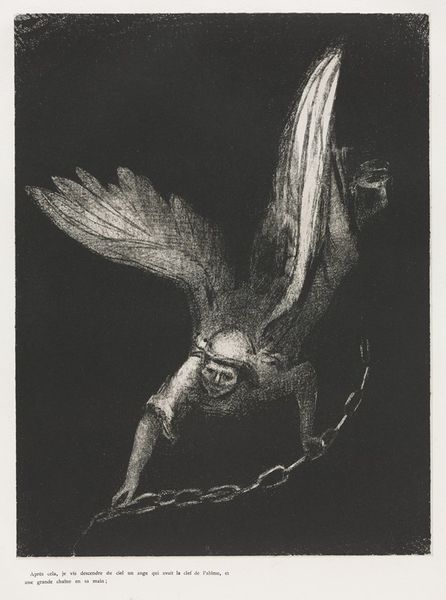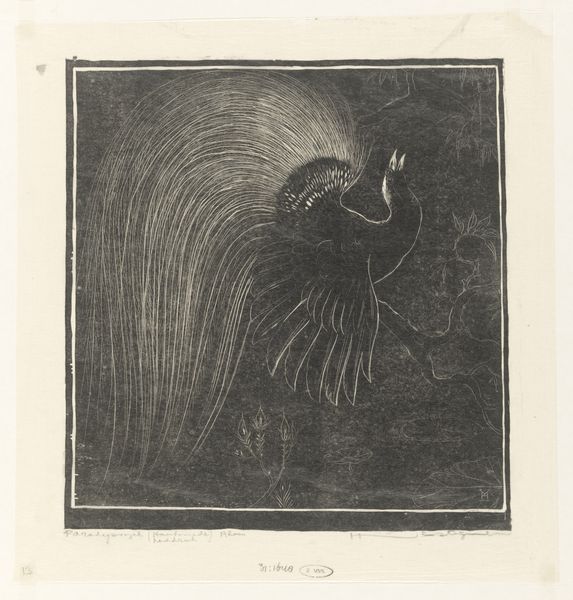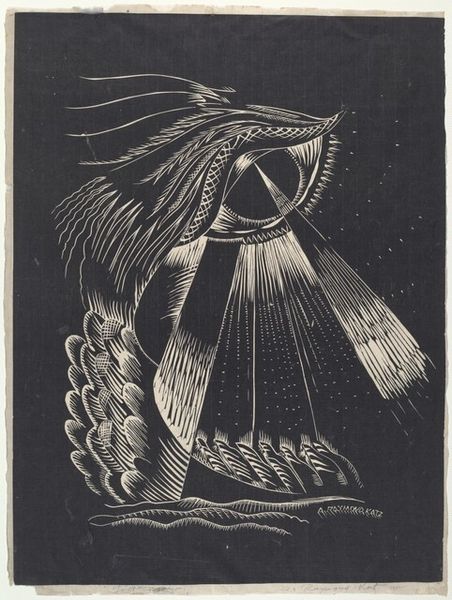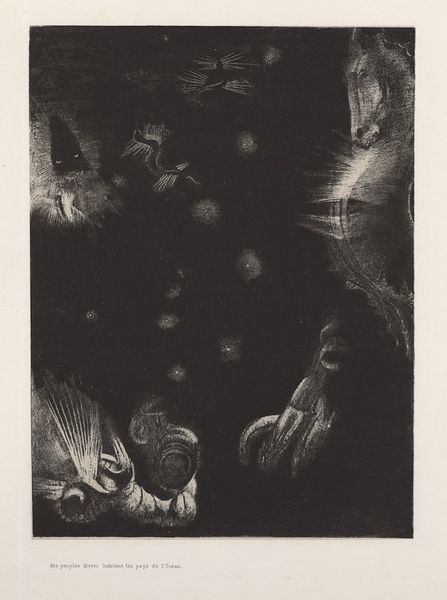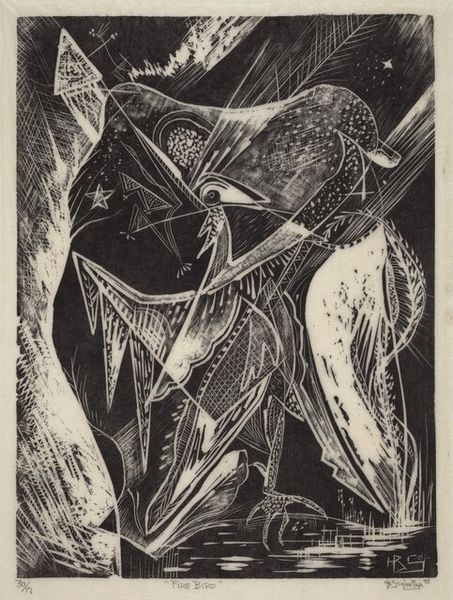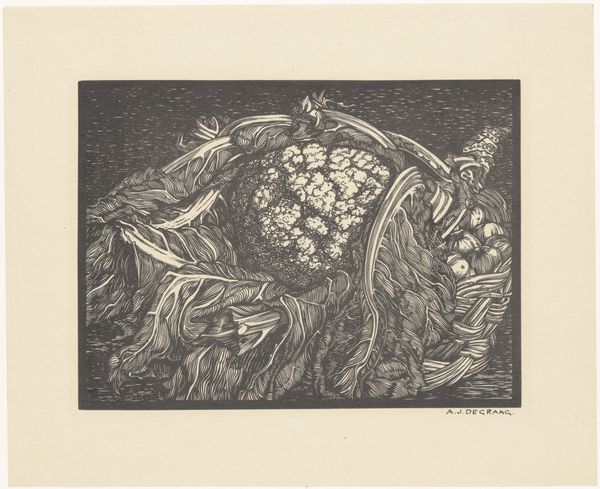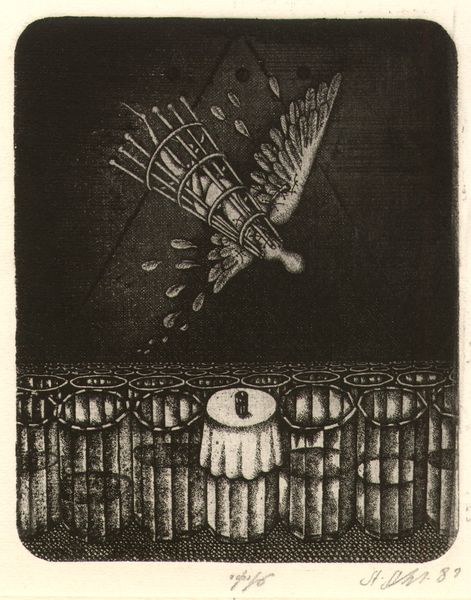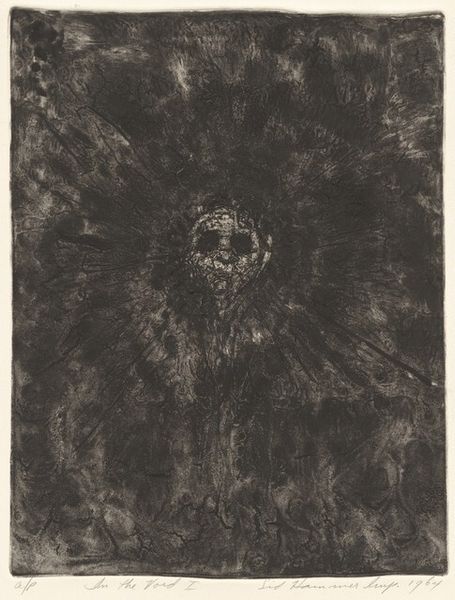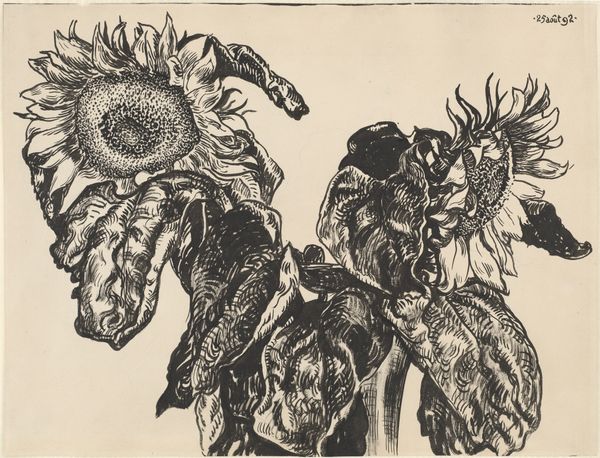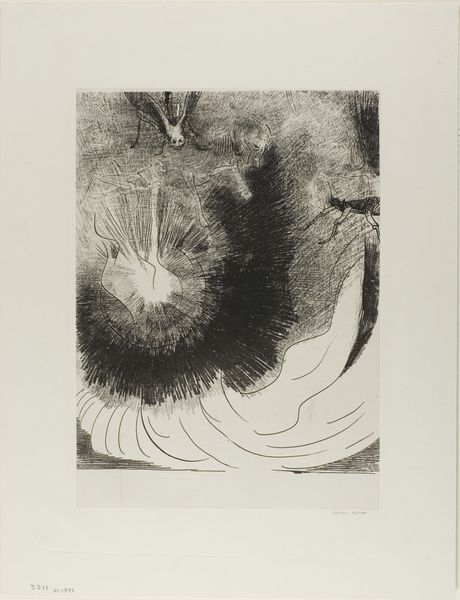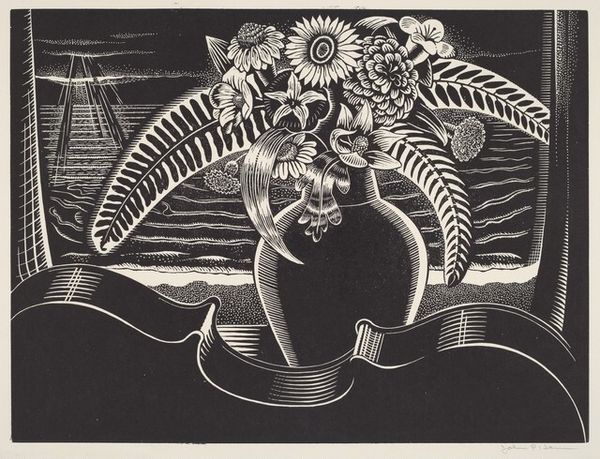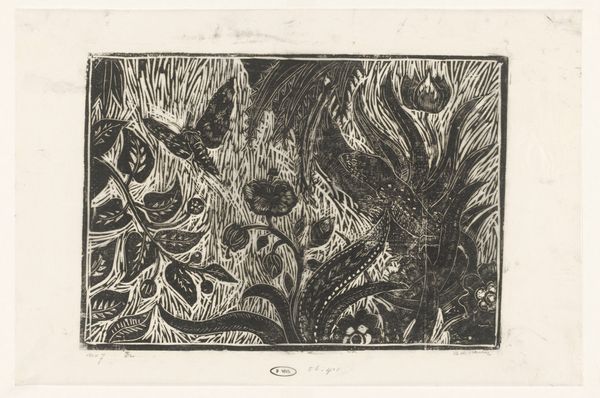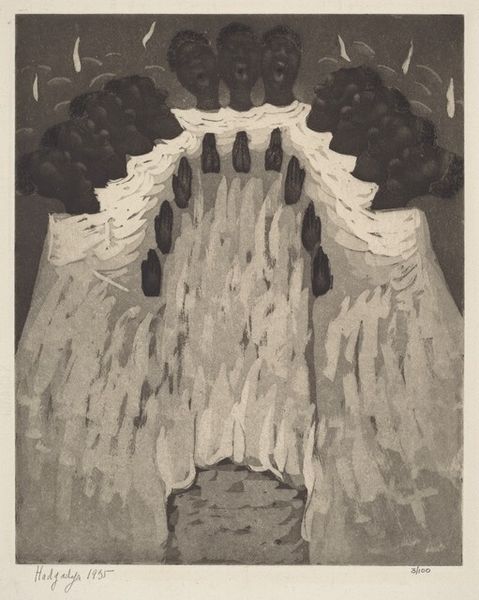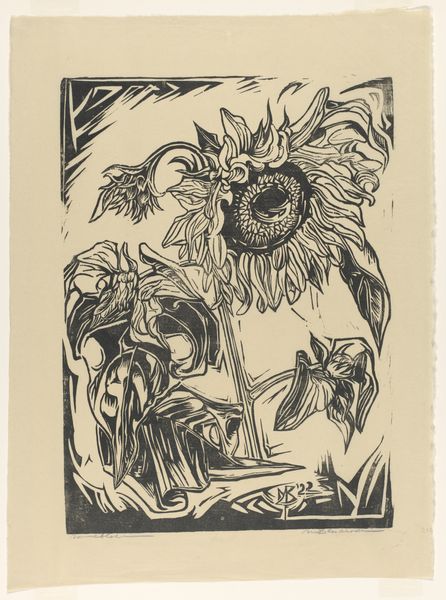
drawing, graphic-art, print, linocut
#
drawing
#
graphic-art
# print
#
linocut
#
modernism
Dimensions: block: 76 mm x 102 mm image: 238 mm x 151 mm mount: 277 mm x 215 mm
Copyright: National Gallery of Art: CC0 1.0
Curator: Ethel Wall Struss's "Poinsettia," a linocut print from around 1938. The black and white contrast immediately catches my eye; it's dramatic. Editor: Absolutely, it almost feels like a woodblock print. There's something very striking about the simplicity—a real emphasis on the textures of the leaves, highlighted by these almost harsh cuts. The contrast almost gives the poinsettia leaves a shadowy feel. Curator: Linocuts, as a printmaking medium, were fascinating tools for artists. Their rise in popularity intersects with social movements, art education and democratization efforts of that time, particularly with the Works Progress Administration’s printmaking divisions. Struss, by embracing it, participates in that historical moment of wider accessibility of art production. Editor: Definitely. Thinking about poinsettias themselves, though – they're loaded with cultural weight, especially around the holiday season. There's a complicated history of their commercialization and the ways they've been integrated into Western Christmas traditions. Is Struss engaging with that at all, do you think? Or, what’s her story? Curator: That's a key intersection! As a woman artist in the mid-20th century, her access to exhibiting venues might have been different. By choosing a widely-recognized motif, the artist enters conversations not always easily had about value, commodification, labor, and tradition. Editor: Right, and the black and white, graphic quality strips away some of that saccharine sentimentality often attached to the flower, lending it a certain gravity. Curator: Precisely, the artist makes a commercial signifier become something far more intimate. How this artwork operates in various institutions might determine our understanding of it as either a simple seasonal motif, or as an active piece of socially conscious graphic work. Editor: I appreciate you highlighting the work's layered interpretations, acknowledging Struss's voice as an artist navigating artistic expression and popular expectations in a print like this. Curator: It’s crucial to continually unpack this context as a way to resist narratives of single, static interpretations of artwork. Editor: Right, because ultimately it's a prompt for more inquiry into how these narratives intersect and play out over time.
Comments
No comments
Be the first to comment and join the conversation on the ultimate creative platform.
